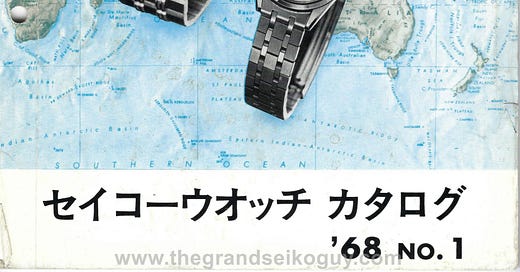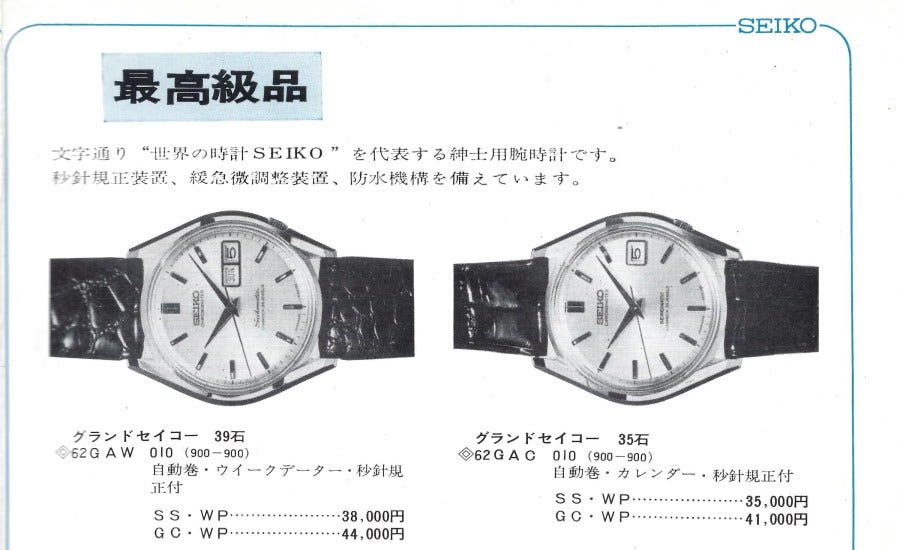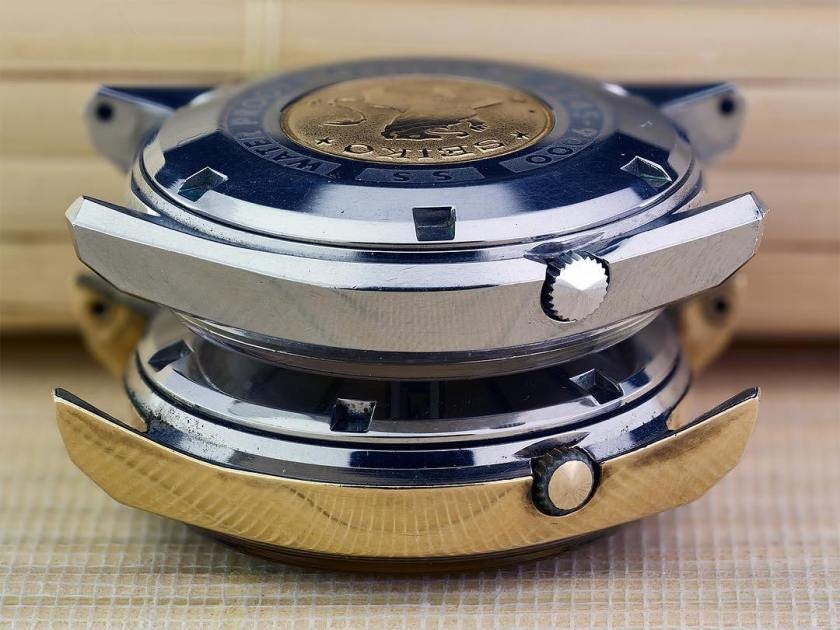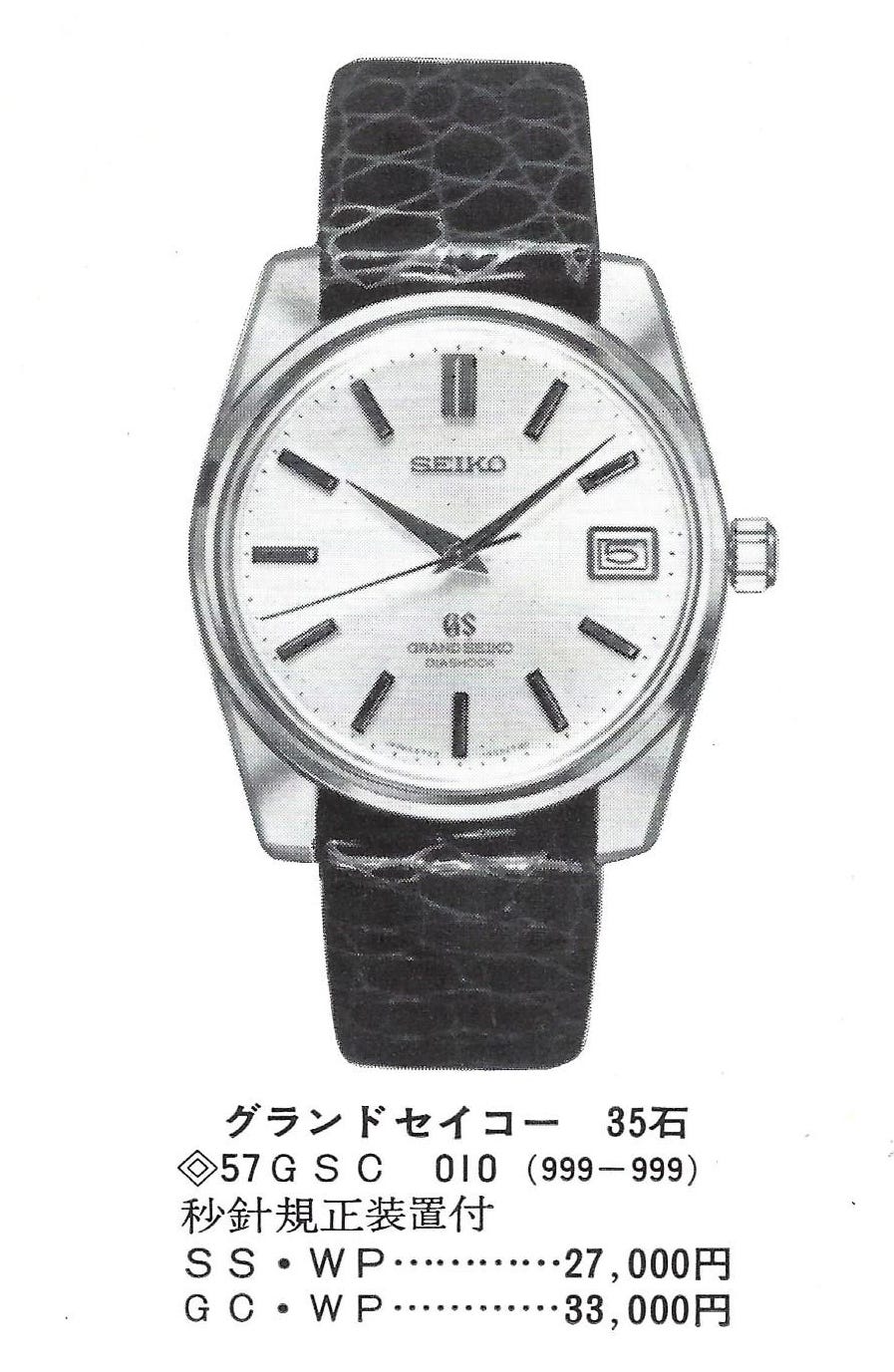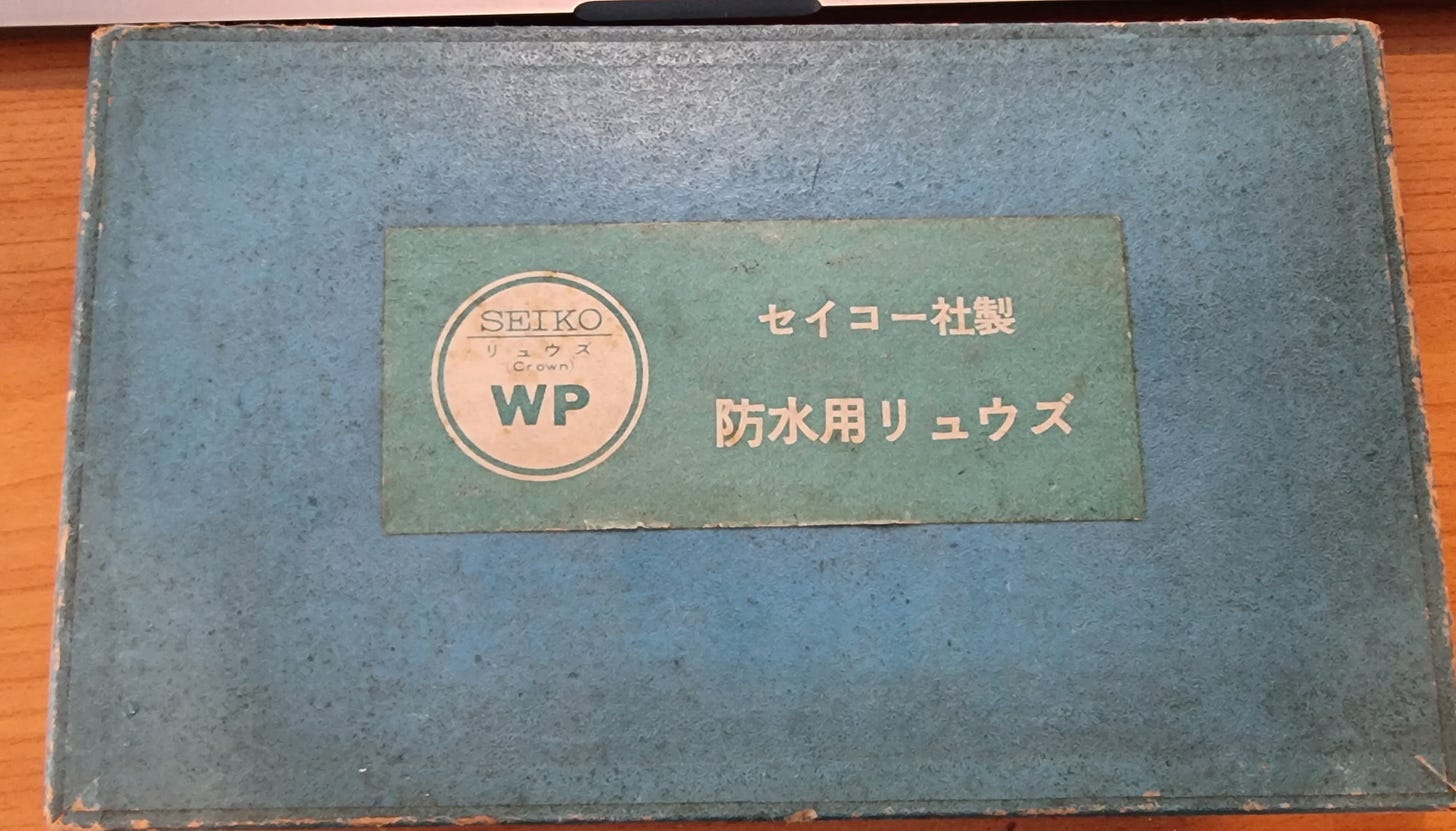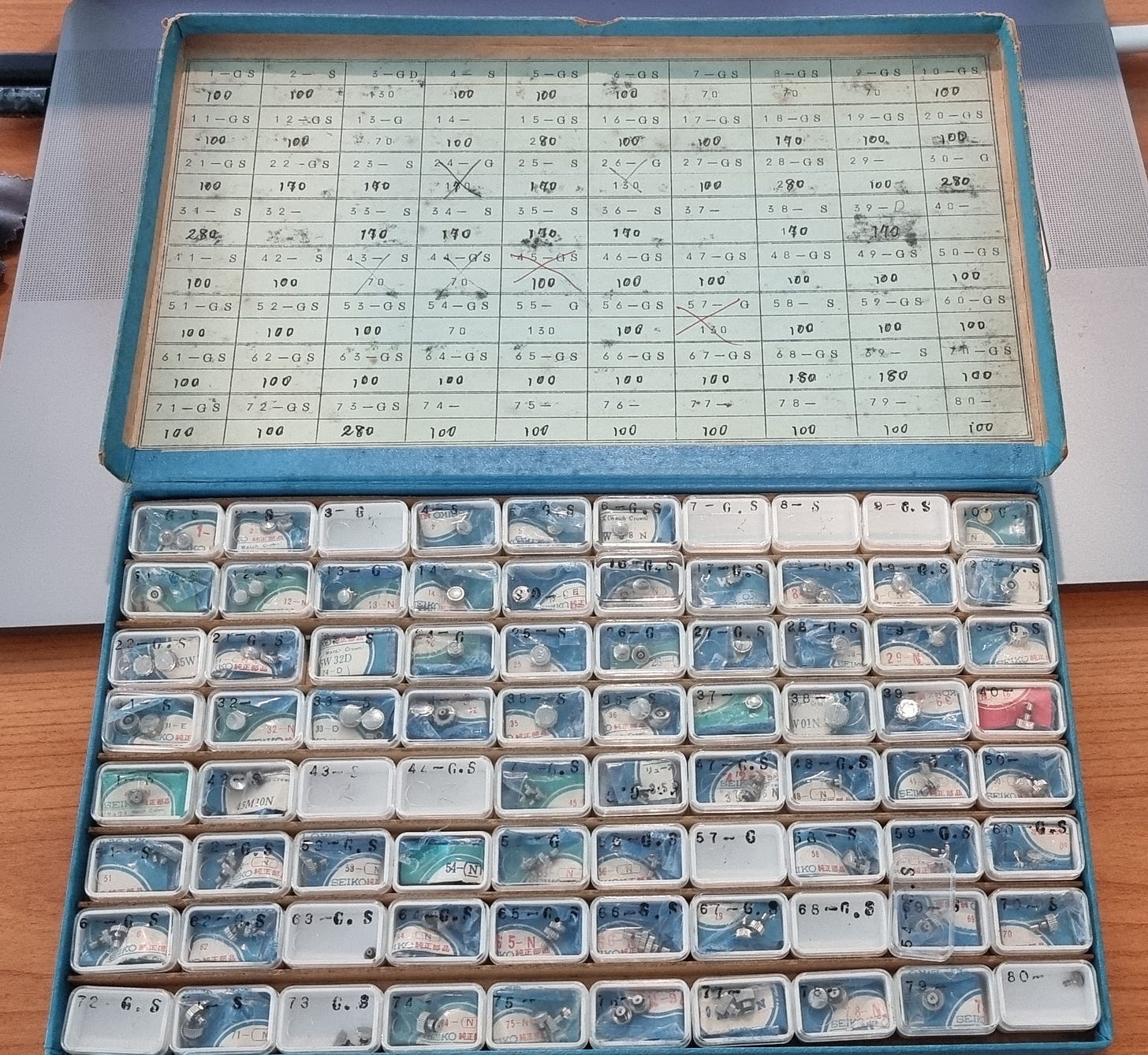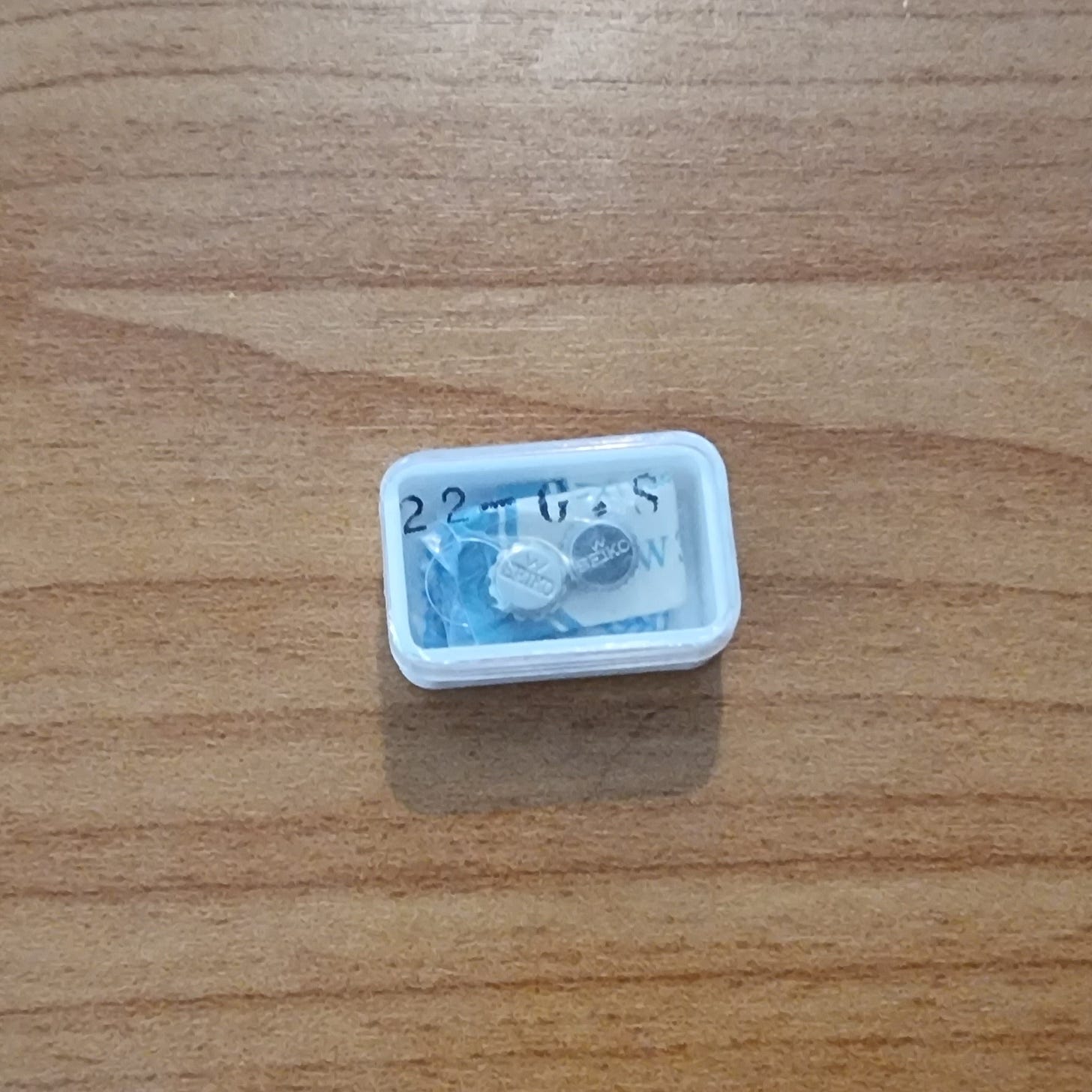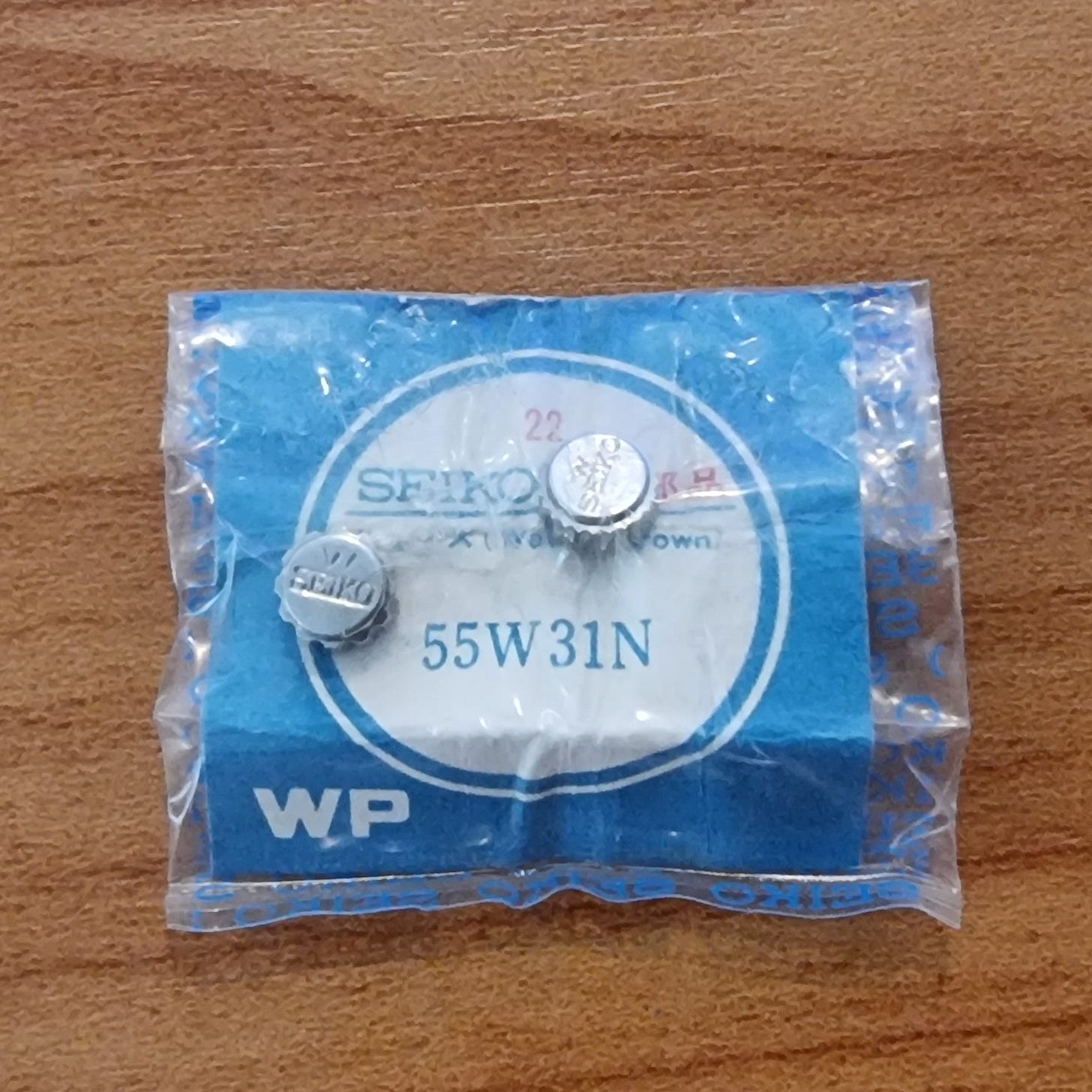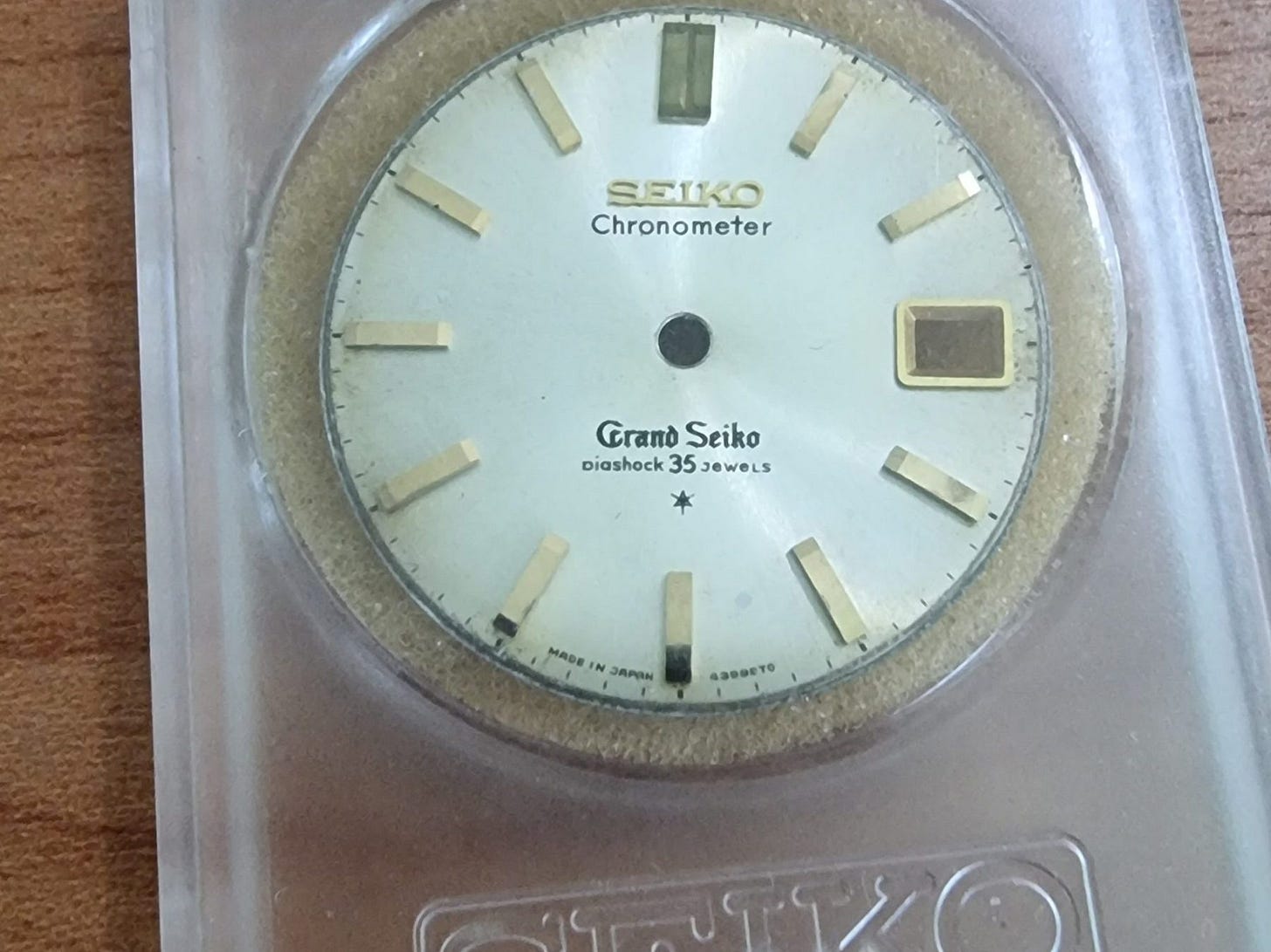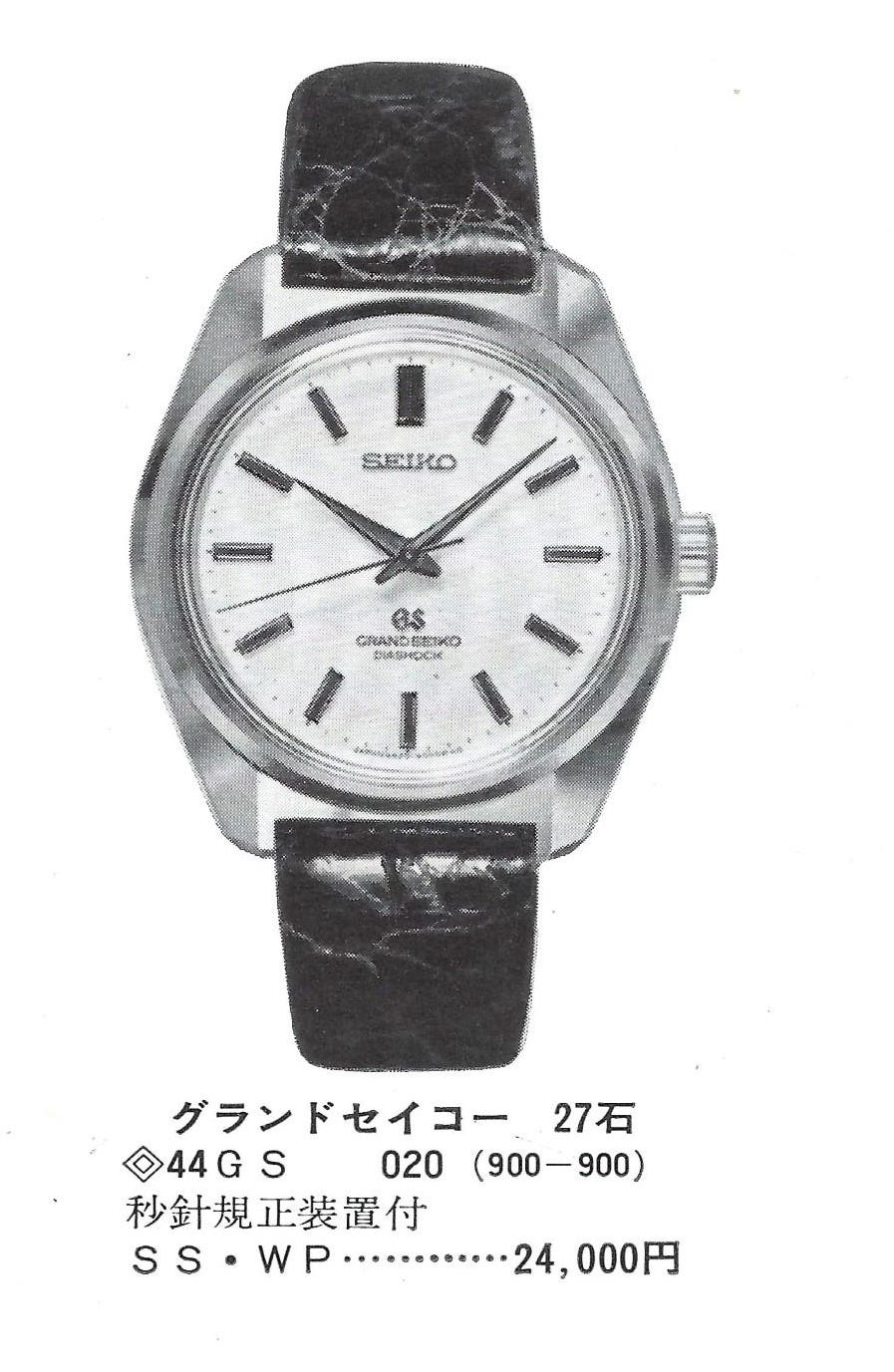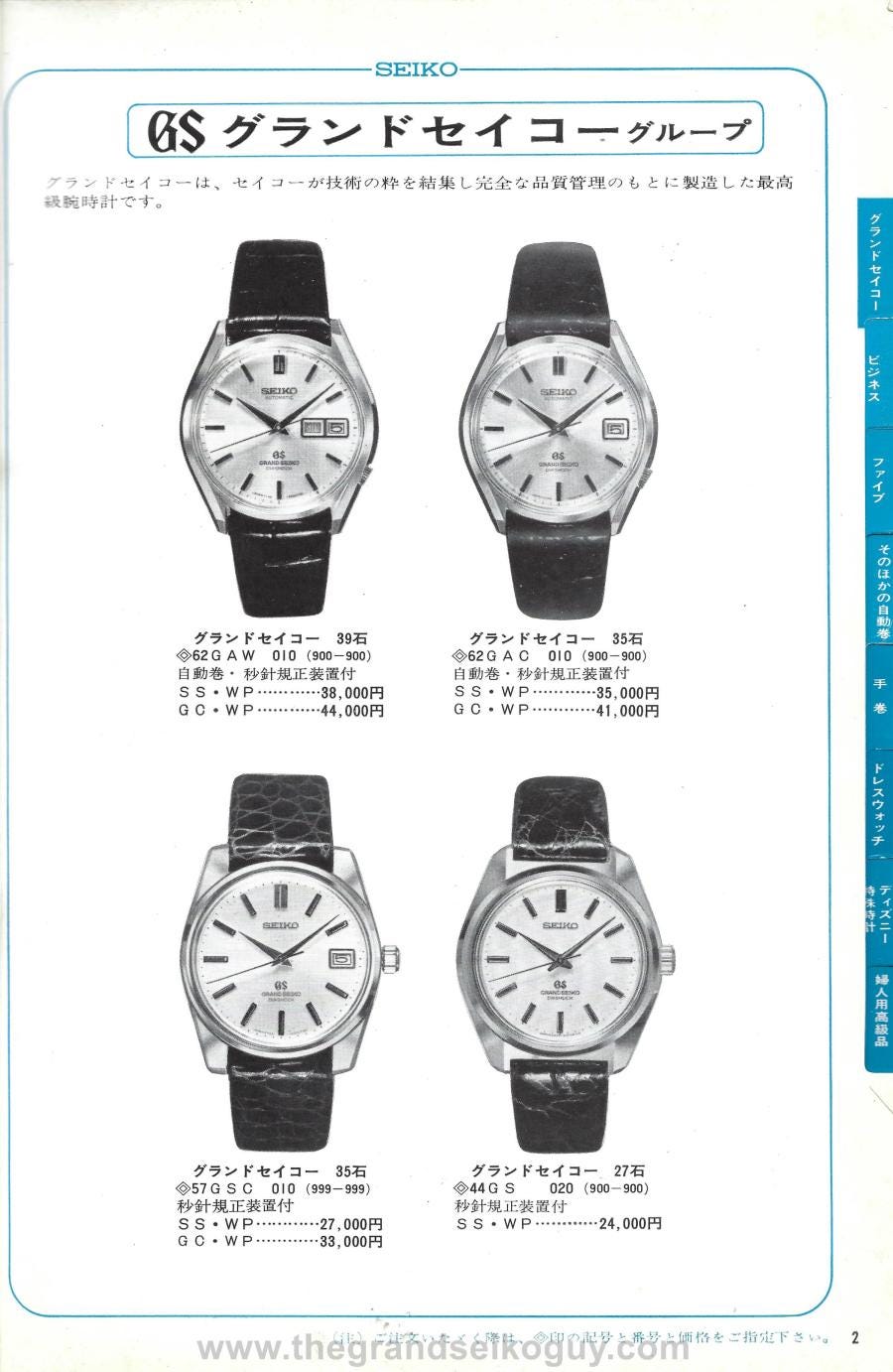The Seiko 1968 no.1 catalogue
Starting from 1968, Seiko changed the numbering system for their new catalogue series that had been introduced just two short years ago. Rather than simply increment the number of the catalogue each year, and introduce a supplemental catalogue to cover newer references introduced subsequent to the publishing of that year’s main catalogue, henceforth there would be two main catalogues published in the first and second halves of the year.
These catalogues would be identified with the year of publication, and then distinguished by “number 1” and “number 2” suffixes. In addition, there would also be a supplement to the second catalogue of the year, published prior to the holiday season that details new watches introduced in the second half that missed the cut-off date for the number 2 catalogue.
We saw how with the number 2 catalogue from 1967, despite there being a single Grand Seiko pictured, the catalogue contents were actually quite confusing.
Fortunately things are much simpler with the catalogue featured in this week’s newsletter, but nonetheless there is still quite a bit of interesting history and context to be gleaned from the single page featuring photographs of four Grand Seiko references.
Grand Seiko 6245-/6246-9000
The first two watches illustrated are from the 62GS series – the first Grand Seikos with automatic movements.
As discussed in the earlier article, these Grand Seikos “evolved” from the already existing Seikomatic Chronometers -
The above image is taken from the 1967 No. 2 catalogue, where we see images of the Seikomatic Chronometers presented, but the textual data accompanying them is for the Grand Seikos.
For the 1968 No. 1 catalogue, that “error” is fixed, and the correct images are used for the 6245 and 6246 Grand Seikos.
Over the course of its brief lifetime, there were a total of 10 distinct references in the 62GS series, with 1966 production pieces featuring lion medallions and having the reference code suffix -9000 and 1967 and 1968 production pieces featuring GS logo medallions and having the reference code suffix -9001.
Additionally, you had the choice of either the date-only 6245 movement, or the 6246 day-date; and with case material being either stainless steel or cap gold.
Finally, there are extremely rare examples of both case metaled references 6246-9001 using different hands and dial indices - these watches never appear in any official publication that I have been able to trace.
It is interesting to note that, as can be found on other vintage Grand Seiko references, the cap gold cases were not “simply” made by taking a stainless steel case and wrapping it in gold. There are in fact quite significant differences in the case profile of the two examples, as can be seen in the following two images.
The reason for this is that the gold is literally a “cap” that has to fit over the main steel body of the case. Therefore it is not possible to include on the cap gold case the reverse angled case facets clearly visible on the steel cased watch in the above photo.
Grand Seiko 5722-9991/9011
The next watch featured in the catalogue is the 5722-9991. In the previous main catalogue the 57GS reference pictured was the earlier 5722-9990 with the “Chronometer” dial, but here we are presented with the contemporarily correct final iteration of the 57GS series.
Note the consistency in the price architecture here – with both the 62GS series and 57GS series, the premium for the cap gold cased variant over the stainless steel version is 6,000 Yen. As we will see when we look at the next catalogue, this premium would increase to 8,000 Yen with the introduction of the 61GS series.
If you look carefully at the image of the 5722-9991, you can just make out that the crown on this watch is the fine-knurled version. In the catalogues and all other contemporaneous literature, only the 5722-9991 is ever shown with this later fine-knurled crown, and the earlier 43999 and 5722-9990 references are only ever seen with the coarse knurled one.
Many years ago, I acquired a box of Seiko crowns from a Japanese watch shop that was closing down. Not just any old box, but the official box from Seiko that was distributed to watchmakers, containing sample crowns for many dozens of different references.
Inside the big box, are no fewer than 80 numerically coded little boxes, the majority of which still containing small packages containing crown samples, and - as correctly identified by the Seiko exterior parts catalogues, box number 22 contains part number 55W31N - the crown for the stainless steel 57GS.
On opening the box, I was amazed to discover a sealed plastic sleeve containing one example each of both the coarse and fine knurled crowns.
Whilst there are many examples these days of earlier 57GS watches being fitted with the later fine knurled crown, it is because of the contemporary images showing only the 5722-9991 with the fine knurled crown that I consider the earlier coarse knurled crown to be “correct” for both versions of the 43999, and the 5722-9990.
Although there are two distinct cap gold 57GS references - the 5722-9010 and 5722-9011 - it is important to note that, unlike their stainless steel cased counterparts, the 5722-9990 and 5722-9991, the dials on both cap gold references are the same “Diashock” dials that can be seen in the image above (although obviously with gold plated indices).
To the very best of my knowledge, there are no examples existing of a Chronometer-dialed 57GS with a cap gold case. However, it is clear that Grand Seiko were contemplating a cap gold 57GS prior to this, because I have in my collection a remarkable dial that seemingly has no matching case to go with it -
Quite why this dial exists, and why there is no production watch that features it, is a mystery that perhaps will never be solved. However, as we have seen before, it is not the only example of an early Grand Seiko dial that never made it into a production reference.
Grand Seiko 4420-9000
There are actually two dial variants of the seminal 44GS, with this image showing the earlier “Diashock” dial variant that was first introduced in the supplement to the Number 2 catalogue for 1967, as detailed in the previous newsletter.. The later dial design, that we will see pictured in a subsequent catalogue, removed the line of text “Diashock” and replaced it with the logo for the Daini-Seikosha factory.
These days, of all the watches shown in this catalogue, it is the 4420-9000 that is by far the most collectible and valuable. The reasons for this are simple – it is the watch that is considered to have introduced Seiko’s “Grammar of Design”, which to this day the brand still looks to adhere to; and it is far less common than 57GS or 62GS references.
Just recently, a very rare example of this early dial variant of the 4420-9000, complete with boxes and papers, sold at Phillips Geneva auction for over $63,500.
What is interesting to note however is that of its day, it was the cheapest of all the references on sale in early 1968. At 24,000 Yen, it was 3,000 Yen cheaper than the 57GS – a price difference that makes sense when you compare the functionality of the two references. The 57GS has a date, and with the 5722-9991 introduced a 19,800 bph movement, whereas the 44GS has no date, and its movement beats at 18,000 bph.
Given the lower pricing of the watch to its contemporaries, it is maybe a little surprising that they are so much harder obtain these days than the 57GS or 62GS – one can only assume that it wasn’t particularly successful in the marketplace.
And finally…
Despite the fact that in this catalogue we see pictured four distinct references from no fewer than three different Grand Seiko series, it is worth noting that for the first time, we have a consistent dial layout presented across all three series in the range - 57GS, 62GS, and 61GS.
In the top half of the dial we see an applied Seiko at 12, with automatic printed underneath for the 62GS series; and then in the bottom half, an applied GS logo, with Grand Seiko and Diashock printed on separate lines underneath.
This is the only occasion when this dial layout was consistently applied across all available references.
Gallery
Presented below is a scan of the single page from the 1968 Number 1 catalogue that features Grand Seiko references.

